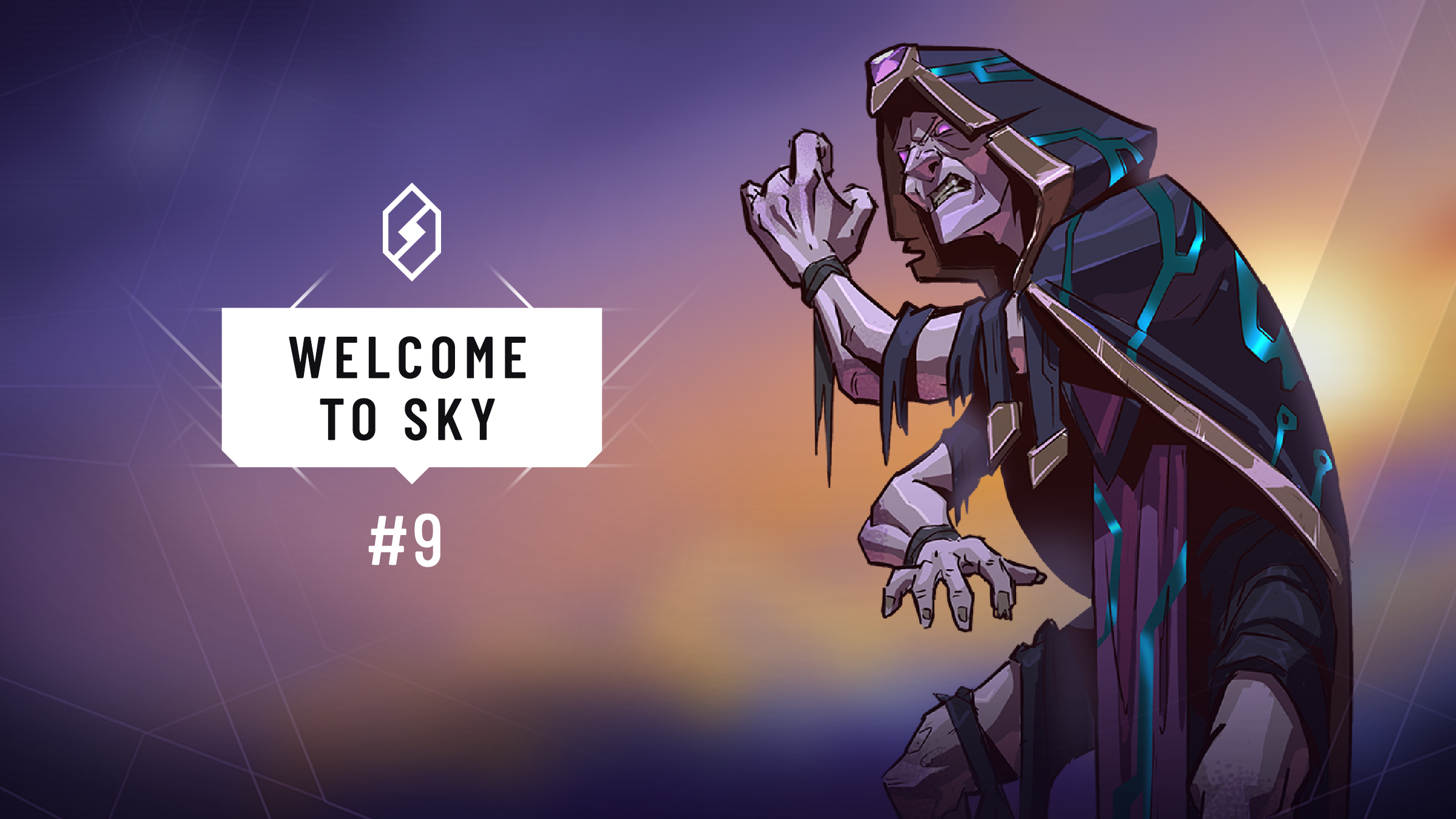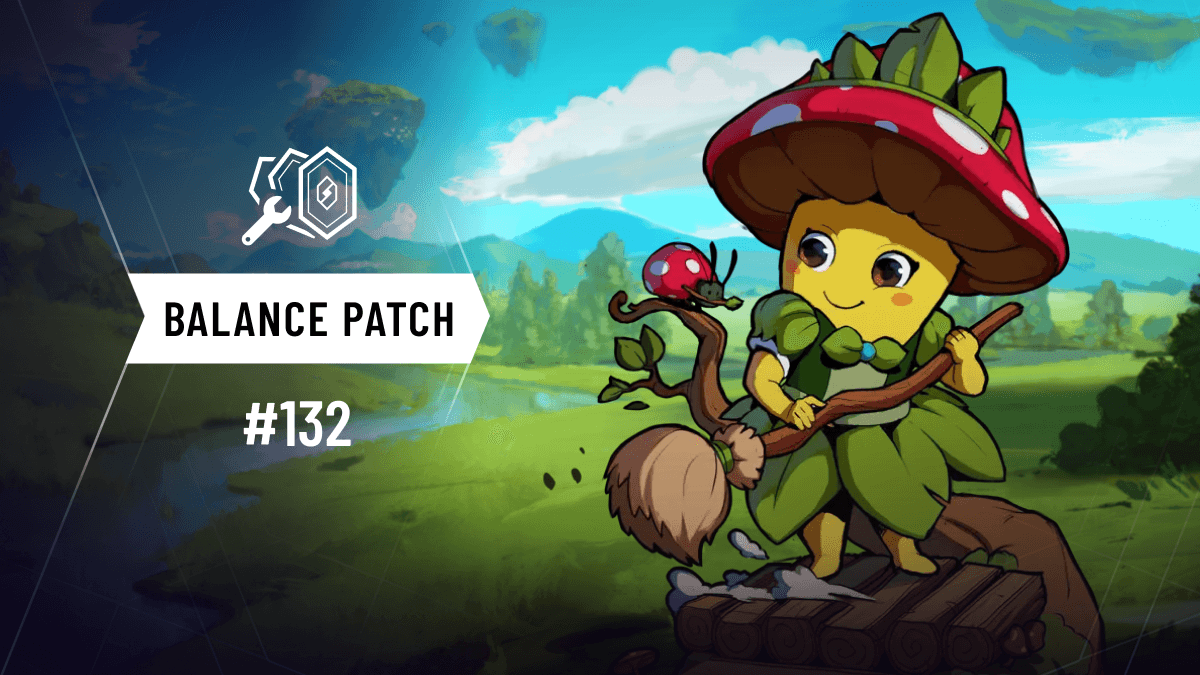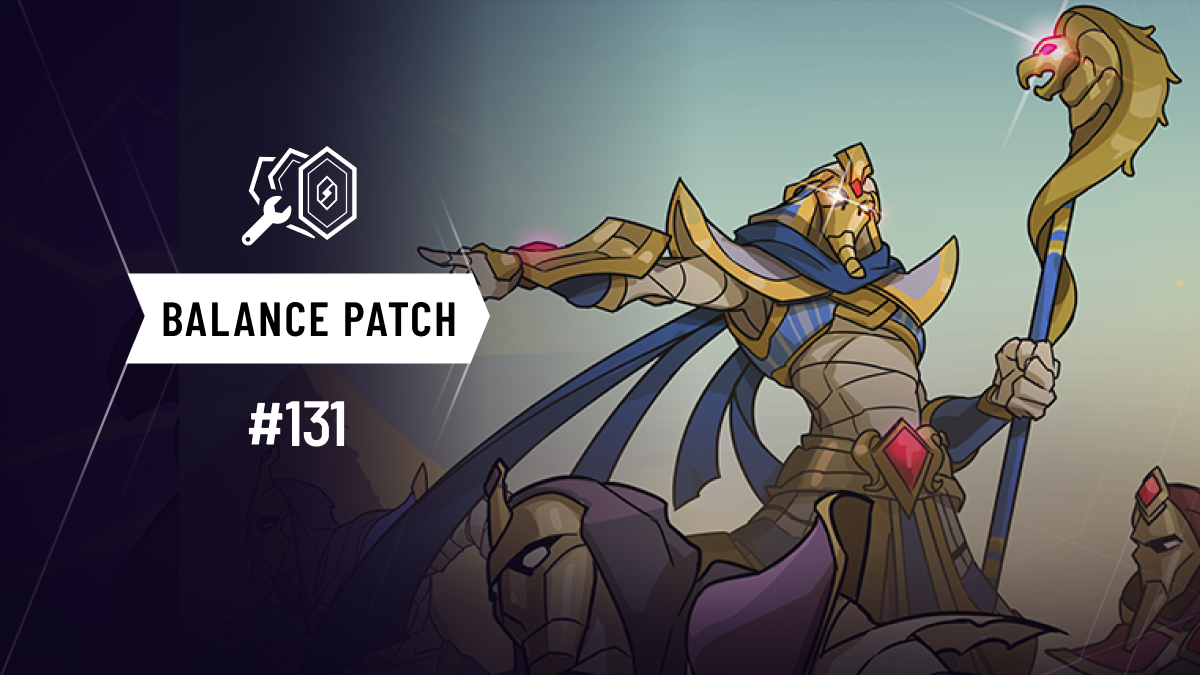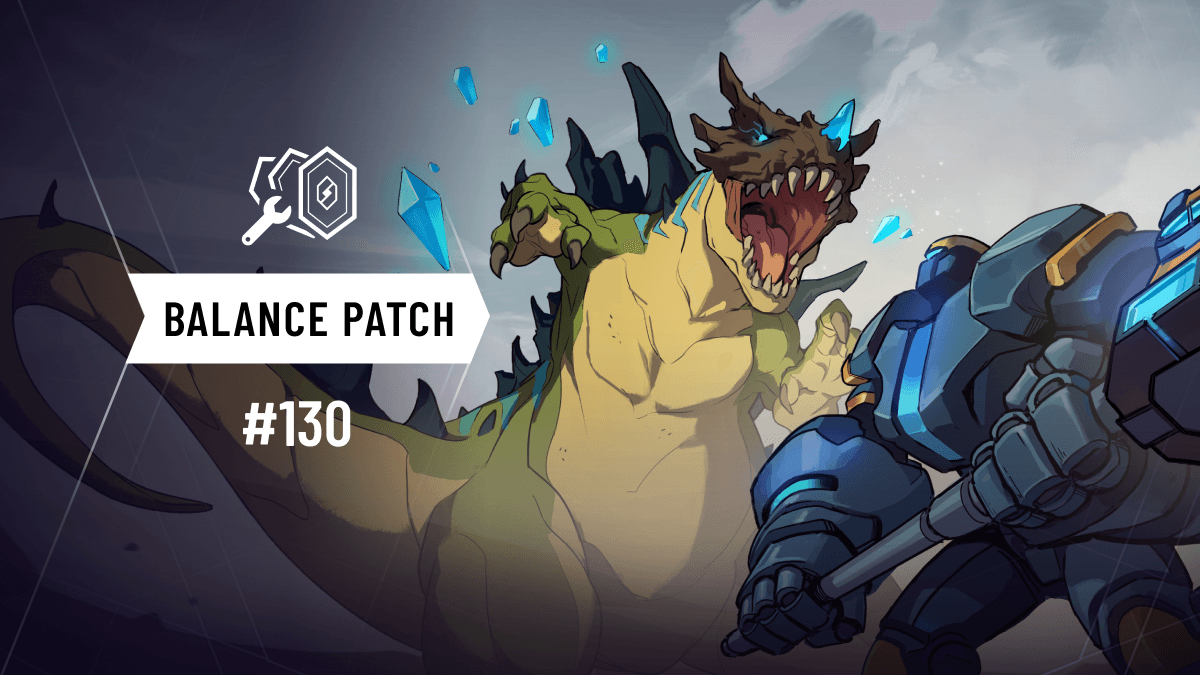Welcome to Sky #9: Constructed Deckbuilding - Part 2

In Part 1 of Constructed Deckbuilding, we covered the essentials of deckbuilding in Skyweaver. This time, we’ll be going into a bit more depth as to the different roles of cards in your deck, as well as the importance of balancing the costs of cards in your deck, and developing a good Mana Curve, to ensure your deck can make meaningful plays at every stage of the game.
Post 1 - The Basics of SkyWeaver
Post 2 - Player Actions
Post 3 - Keywords
Post 4 - Enchantments
Post 5 - Prisms
Post 6 - Discovery Mode
Post 7 - Elements of SkyWeaver
Post 8 - Constructed Deckbuilding Part 1
Post 9 - Constructed Deckbuilding Part 2
Post 10 - Top Cards of 2019 Part 1
Post 11 - Top Cards of 2019 Part 2
Post 12 - Top Cards of 2019 Part 3
Post 13 - Introducing Intellect
Building a Solid Foundation and Mana Curve
Regardless of what type of deck you are building, there are certain roles the cards in your deck will need to fill, in terms of both costs and effects, to allow your deck to play well during the Earlygame, Midgame, and Lategame. This is sometimes known as a Mana Curve, which is the progression and balance of the costs of the cards in your deck. If this curve is well balanced, you should have a good assortment of cards to play at all stages of the game. If you have too many cards at one cost, that can be an issue, and you may want to try to reduce the number of cards at that particular mana cost and add more cards of other costs.
In the example above, my deck has a pretty good Early-to-Midgame curve, but a harsh spike, with seven 6c cards, and as a result, I should probably remove some 6c cards and spread my costs out a bit, perhaps cutting three 6c cards and adding a 3c, 4c, and 5c card instead.
Units Vs. Spells
Generally it's good to aim to have a balance of both Units and Spells in your deck, as Units are valuable for controlling the board and damaging your opponent, but are slower, since they come into play “sleeping” and can’t immediately attack, while Spells have less long term value as they are one use, but can take effect immediately. Generally, it’s better to have slightly too many Units, rather than too many Spells, as Units can fight against enemy Units and force your opponents to expend cards to destroy them, and additionally, many Units carry attached Spells, or Spell-like Summon or Play effects that can let them make an immediate impact and substitute for spells. However, each deck’s individual needs differ, and it's quite possible to make Spell-heavy or Unit-heavy decks work so long as you have a good game plan.
Earlygame Cards
Earlygame cards typically fall in the 1-3 Mana range. These are the cards that you’ll rely on to try to overrun your opponent early, or keep from being overrun yourself. Earlygame cards should generally make up around 33% of your deck, though Aggressive decks typically run far more. Going below 30-33% is risky, as if your opening hand lacks any Earlygame cards, you’re likely to be at a huge disadvantage for the first few turns. Having too many Earlygame cards can also be an issue, as it may leave you with a weak Lategame, meaning your deck cannot win longer games, but that can vary depending on how aggressive your deck is aiming to be.
Units
Most low-cost Units will do okay in the Earlygame, but there are some that perform particularly well. Units like Claw Bear have high stats for their cost, and can help secure the Earlygame through brute force are great. Glory Units like Coffin Moth, on the other hand, tend to be weaker, but may offer repeatable effects that can snowball if left unchecked. Banner Units like Songbird may have low stats on their own, but can give your Hero more attack, allowing you to destroy enemy Units more effectively and keep board control. Finally, Units with Armor like Carbonite will resist damage from Units and Spells, letting them live longer. You can Learn more about keywords like Banner and Armor in their own post here.

Removal Spells
In the event your Units alone fail to overwhelm your opponent, and your opponent manages to get their own Units in play, it's important to be running a number of Removal Spells low in your curve to handle enemy units. These are Spells with the primary purpose of destroying or “removing” enemy Units. These can be straightforward damage dealers, like Strike Down, non-damaging removal like Whisk Away, or spread damage effects like Clapback. Spells like Icy Touch which apply negative Enchantments like Frozen can also be valuable, letting you deal heavy damage to more powerful Units, and beat problematic Enchantments like Barrier and Shield. Read more about Enchantments in our post on them.

Buffs
Once you have a Unit or two in play, you can play Buff cards to strengthen them and help protect them against being destroyed by enemy Spells and Units, furthering your own domination of the field and tempo of the game. Some, like Stone Fist, give pure stats, while others, like Buckler Up and Wind Sword, offer units defensive Keywords or Enchantments like Armor and Shroud for greater protection. Finally, some others like Blood Moon can let you empower multiple Units at once, and go for an alpha-strike on your opponent.

Mana Acceleration
Rather than focusing on Units, these cards allow you to gain Mana, letting you make plays sooner. Using these cards will generally lose you tempo in the Earlygame, since you’re not developing your board or removing enemy Units, but the Mana they give you can allow you to make up for lost time and pull ahead. Earlygame Mana Acceleration cards typically either offer temporary boosts, like Rosewater Charm, or maximum Mana increases at a cost, like Take Root, which gives your Hero the negative Enchantment Roots, and Wed Dead, which requires you to sacrifice a Unit in exchange for an additional maximum Mana. There’s also the Unit Turtor, which accelerates both players maximum Mana, which can be risky. But if your deck is designed to take advantage of the Mana boost more so than your opponent’s deck, then it can be fantastic.

Midgame Cards
These typically fall in the 4-7 Mana range, with more trending towards the lower end of that spectrum. The aim of your Earlygame cards is to ensure you reach the Midgame in good shape, and are able to further capitalize on it with your Midgame cards. Decks will typically have 30-50% of their cards be Midgame cards.
Powerful Offensive and Defensive Units
With each Mana you gain, the Units you can deploy become progressively more powerful, and in the Midgame, you’ll gain access to a number of formidable allies, which also become a bit more specialized towards offense or defense. These can take the form of aggressive Units that provide a lot of stats, like Spite and Malice, or powerful one-card armies that summon more Units on death, like Trydra. Defensively, you can employ Units like Quadra and Doom Shroom, which have powerful stats, and can damage enemies upon their own Death.

Bigger Removal
To help combat the more powerful Units players can deploy in the Midgame, you’ll also gain access to better removal which can deal with many Units at once, as well as more powerful single target removal that can deal with larger foes. Cards like Burninate, Frigid Blizzard, and Mass Confuse can clear out swathes of foes at once, while powerful single target removal options like Frog King can remove nearly any foe, regardless of size or abilities.

Card Draw and Economy
By the Midgame, you may have spent a number of your cards fighting through the Earlygame. To this end, it is important to pack cards that let you draw more cards from your deck, to ensure you have a steady flow of resources. These can be Spells that draw cards like Gift of Swords, Units that draw on Death, like Eclipse, or even less conventional means of card economy, like Jar of Souls, which revives 3 dead Units, letting you reuse their Summon effects and attached Spells.

Healing and Recovery
These are most valuable for Control or Midrange decks, as they heal wounds you may have suffered in the Early and Midgame, and serve to let you survive and reach the Lategame. Cards like Jakintsu and Earth Golem can restore a lot of HP to your Hero, while the ever-useful Gift of Aya can provide healing, card draw and Mana acceleration all in one. Arise! meanwhile, can summon several Royal Mummy to serve as a defensive bulwark and heal your Hero upon their deaths.

Lategame Cards
These cards are typically found in the 8+ Mana category, and offer big payoffs as compensation for their high cost. These cards can often take over a game on their own if your opponent cannot deal with them, but require you to survive through the Earlygame and Midgame first, so their power comes at a price. Generally, having more than 20% of your deck be > 7c can be pretty risky, since each Lategame card you draw early will effectively leave you down a card in the Early and Midgame stages.
Value Engines
These are typically high-cost cards which can generate multiple new cards on their own, letting you bury your opponent in card advantage and outlast them. As some examples, Arcadeum Mask lets you keep casting near-unlimited random Spells as long as you have Mana, Floodwater allows you to recycle your powerful Water cards and draw a whole new hand, Prismata grants many Spells and discounts them, and Grave Roil can let you reuse the Death effects of all your Dead Units while removing any Unit as a bonus.

Finishers
These cards can allow you to make big aggressive pushes and close out the game quickly, rather than focusing on outlasting foes. Inspire cards like Zam can be used in tandem with a number of copy effects and spells cards to deal a lot of damage immediately, or in the case of Mootichi, squeeze a ton of extra value out of every spell you play. The devastating Band Together can transform a board of small Units into monsters that can tear your opponent apart. Entwail is a tricky card to build around, but can allow you to deploy several of your finishers even before the lategame, suddenly creating a massive threat for your opponent to deal with.

Lategame Removal
To deal with such massive monsters and Value Engines requires powerful Lategame Removal. Allbane is a great option, dealing Wither damage to all other Units on Summon, and as a Unit itself, can be recurred using many of Heart’s other cards, making it an excellent repeatable board-clear. Extinction Event damages each Unit equal to that Unit’s own cost, and as such, is excellent at taking out Lategame Units. Dragon’s Wrath deals somewhat low damage, but has Wither and Lifesteal, and dusts anything it kills, while leaving your own Units unharmed. Scryer’s Pyre can deal massive damage while also providing you with new cards, life, and Mana, but take care it doesn’t discard anything important!

Keep in mind that all the cards I’ve shown here are just a tiny handful of our 500+ cards, and more are added all the time, so it is best to just jump in and experience them for yourself!
Lethal Puzzle
See if you can figure out how to defeat your opponent using the game state presented below, in just one turn! Solution will be in the next post!
The solution to our last post's lethal puzzle is also right below! Congratulations to everyone who solved it!
Next: Post 10 - Top Cards of 2019 Part 1
To chat with me and the rest of the Horizon Games team & our community, join our Discord server! Subscribe to our subreddit to share your ideas, and follow the SkyWeaver account on Twitter if you just want to say hey!
If you haven't already, be sure to sign up to become a SkyWeaver now and to join our waitlist to be invited into our private beta and check out all these new features for yourself.
Check back here again soon, and to get notified on our latest blog posts, subscribe to our newsletter.

Recent Posts














